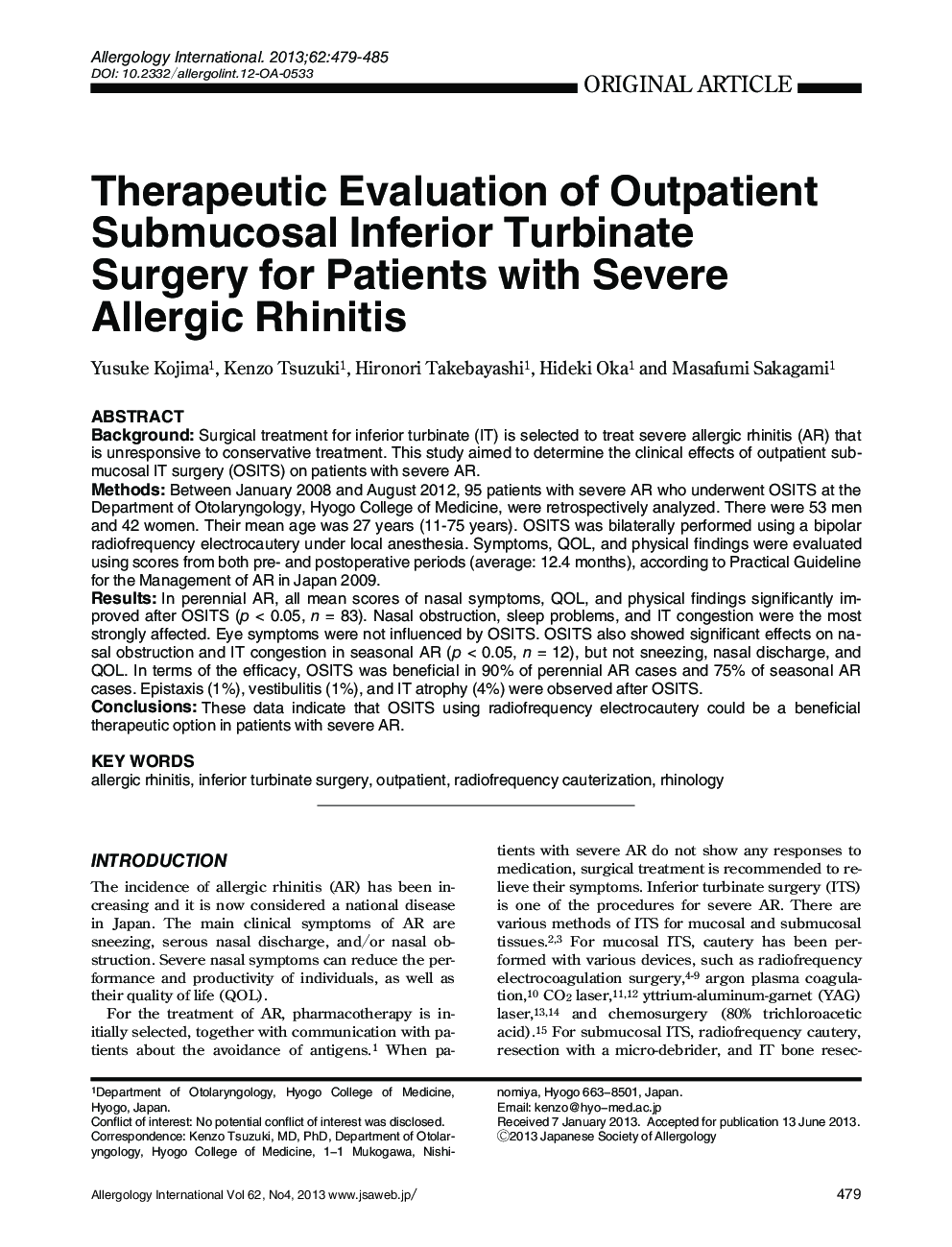| Article ID | Journal | Published Year | Pages | File Type |
|---|---|---|---|---|
| 3340746 | Allergology International | 2013 | 7 Pages |
ABSTRACTBackgroundSurgical treatment for inferior turbinate (IT) is selected to treat severe allergic rhinitis (AR) that is unresponsive to conservative treatment. This study aimed to determine the clinical effects of outpatient sub- mucosal IT surgery (OSITS) on patients with severe AR.MethodsBetween January 2008 and August 2012, 95 patients with severe AR who underwent OSITS at the Department of Otolaryngology, Hyogo College of Medicine, were retrospectively analyzed. There were 53 men and 42 women. Their mean age was 27 years (11–75 years). OSITS was bilaterally performed using a bipolar radiofrequency electrocautery under local anesthesia. Symptoms, QOL, and physical findings were evaluated using scores from both pre- and postoperative periods (average: 12.4 months), according to Practical Guideline for the Management of AR in Japan 2009.ResultsIn perennial AR, all mean scores of nasal symptoms, QOL, and physical findings significantly improved after OSITS (p < 0.05, n = 83). Nasal obstruction, sleep problems, and IT congestion were the most strongly affected. Eye symptoms were not influenced by OSITS. OSITS also showed significant effects on nasal obstruction and IT congestion in seasonal AR (p < 0.05, n = 12), but not sneezing, nasal discharge, and QOL. In terms of the efficacy, OSITS was beneficial in 90% of perennial AR cases and 75% of seasonal AR cases. Epistaxis (1%), vestibulitis (1%), and IT atrophy (4%) were observed after OSITS.ConclusionsThese data indicate that OSITS using radiofrequency electrocautery could be a beneficial therapeutic option in patients with severe AR.
